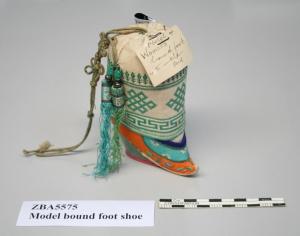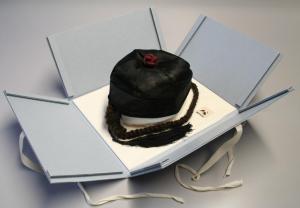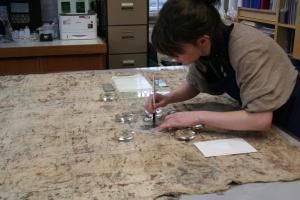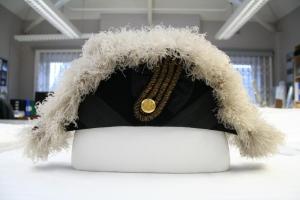
Image©National Maritime Museum, Greenwich, London.
By Nora Meller, Textile Conservation Intern at the National Maritime Museum.
Doing an internship after graduation is a great opportunity for learning while you are practically working. It is a way to gain more experience in conservation and carry out research, interact with fellow professionals to widen your skillset, and develop your portfolio in the meantime. I believe that no one leaves a masters course in conservation thinking that they have learnt everything they need to know for the future. For me for example, the internship provided a valuable chance to work on types of objects which I have never encountered in the studio before, and to have a taste of the range of tasks that the textile conservator is involved with in a museum.
About a year ago in 2013, I graduated in MPhil Textile Conservation and I applied to a Heritage Lottery Fund ‘Skills for the Future’ Textile Conservation Internship at the National Maritime Museum in Greenwich, London. I was very lucky to get the internship which meant that I could spend a year in the Museum’s conservation department, working alongside Nicola Yates Senior Textile Conservator and other colleagues from paper, painting, frame, inorganic and organic conservation. The team has been very supportive from the beginning and the atmosphere really friendly.
One of the first and most interesting projects I worked on was the treatment of forty-two newly accessioned items, donated to the Museum by the London Missionary Society. They originated mainly from South-East Asia and the Pacific Islands. They included beautiful embroidered hangings, small Chinese shoes, hats and bags made of local plant fibres, even peculiar necklaces in which natural materials and modern plastics were mixed… and last but not least, a group of nine Polynesian bark cloths.


Model Chinese bound foot shoe (left) and a Chinese hat with a hair plait (right) – previously in the collections of the London Missionary Society. ©National Maritime Museum, Greenwich, London.
I condition assessed and photographed the objects, and I carried out conservation treatments where this was necessary to enable their safe long-term storage. Some of the bark cloths were very fragmented and vulnerable, and I found their treatment particularly interesting and challenging. To share my experiences with a wider audience, I wrote an entry about their conservation on the Museum’s Collections Blog site.

After the above project which kept me busy for six months, the Museum’s exhibition programme kicked off. We prepared two costumes, the Fifth Astronomer Royal Nevil Maskelyne’s observing suit (quilted jacket and trousers with integral feet) and his wife Sophia Maskelyne’s sack-back style dress (probably her wedding dress) for the exhibition Ships, Clocks and Stars: The Quest for Longitude. The couple lived in the Astronomers’ Apartments up in the Royal Observatory in the late eighteenth century.
Three other exhibitions which have numerous textile objects opened in the Museum this spring: Rozanne Hawksley: War and Memory, Longitude Punk’d, and the Forgotten Fighters: The First World War at Sea gallery. I assisted in their installation which involved liaising with contemporary artists while putting their fascinating artworks on display.
Naturally, conservation in the Museum does not focus only on objects going on display. I have worked on condition-need items as well: objects in the stores which need conservation treatment or better mounting. I have also done some completely behind-the-scene work, namely assisting in auditing the Museum’s entire mannequin collection so that they would be more easily reusable in the future.

- Early-twentieth-century cocked hat mounted for safe storage. ©National Maritime Museum, Greenwich, London
My experiences during the internship were very positive, and I feel that I learned a huge amount about the different aspects of the textile conservator’s role. This year has quickly flown by which reassured me again, that this is the work which I really enjoy and would like to pursue as a career.




